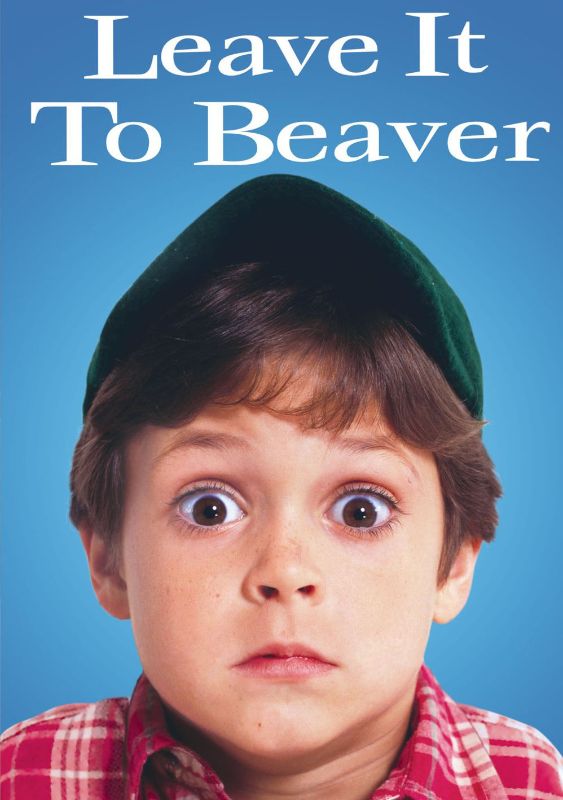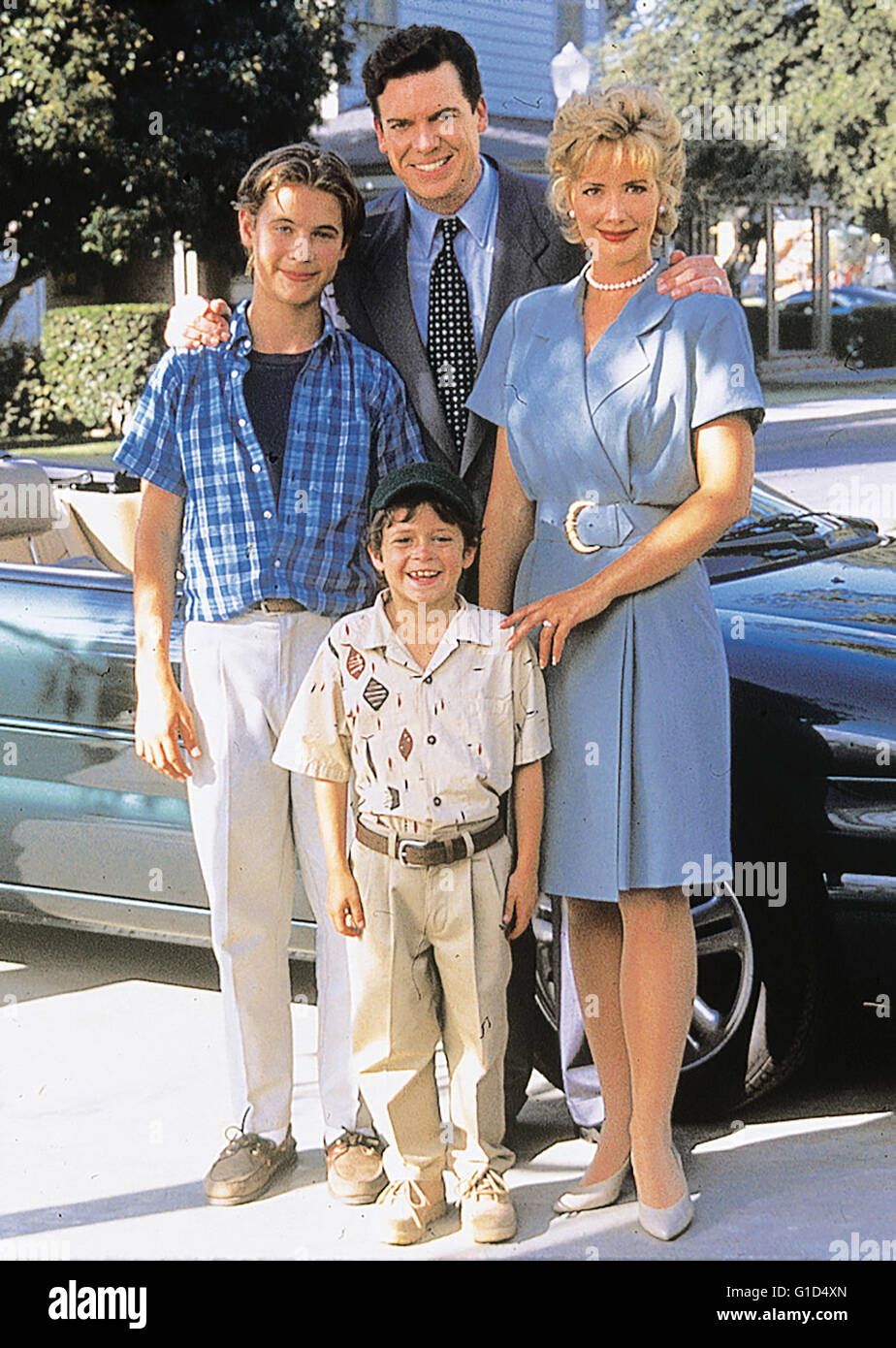Could a seemingly simple sitcom like Leave It to Beaver harbor hidden depths and layers of meaning? Far from being merely a nostalgic glimpse into a bygone era, the show serves as a meticulously crafted tapestry of symbolism, reflecting the anxieties, aspirations, and societal shifts of mid-century America.
The phrase Leave It to Beaver itself has burrowed its way into the American lexicon, evolving beyond its initial association with the iconic television show. It's a shorthand, a cultural shortcut, instantly conjuring images of an idealized suburban existence, a world of picket fences, perfect families, and uncomplicated problems. But the true value of the show extends beyond its surface appeal, delving into the nuances of family dynamics, social expectations, and the changing face of American culture.
The show's enduring legacy is undeniable. From its initial broadcast in 1957 to its syndication across various platforms, Leave It to Beaver has maintained a consistent presence in popular culture. But what exactly is the significance of this longevity? Is it simply nostalgia, or is there something more profound at play? The answer lies in the show's ability to capture the zeitgeist of its time, reflecting both the hopes and the underlying tensions of a society grappling with rapid change.
The Leave It to Beaver narrative presents an intriguing exploration of the suburban ideal. The Cleaver family—Ward, June, Wally, and Beaver—became the epitome of the nuclear family. This portrayal was not accidental; it was a deliberate construction reflecting the dominant social values of the era. Ward, the calm and understanding father, provided guidance and wisdom, while June, the ever-supportive mother, maintained a harmonious household. The Cleaver's perfectly manicured lawn became a symbol of the order and stability that many Americans sought in the post-war years.
The show’s writers and producers were keenly aware of their role in shaping cultural perceptions. The show’s characters were carefully crafted archetypes, reflecting the expectations of the time. Ward embodied the ideal father figure, delivering sage advice and teaching his sons valuable life lessons. June, in her pearls and dresses, represented the devoted homemaker, always ready with a warm smile and a plate of cookies. The children, Wally and Beaver, navigated the everyday trials of childhood, offering a lens through which viewers could identify and empathize.
The suburban setting of Leave It to Beaver provided a backdrop for its narratives. The Cleavers' house, the neighborhood, and the school became stages upon which the show’s dramas unfolded. Each episode offered a slice of everyday life—homework struggles, sibling rivalry, and the occasional scrape with authority. Through these familiar scenarios, the show addressed the anxieties and aspirations of its audience. The show offered reassurance, suggesting that even in the face of difficulties, the Cleaver family could find solutions and maintain their harmony.
However, beneath the surface of this seemingly perfect world, the show also hinted at the complexities of American life. The pressures of conformity, the anxieties about social acceptance, and the challenges of raising children in a changing world were all subtly addressed. In many ways, the show served as a mirror, reflecting the societal challenges of the time. It explored themes such as peer pressure, the importance of honesty, and the consequences of making mistakes.
The language of Leave It to Beaver also played a crucial role in shaping its cultural impact. The show's writers employed a unique blend of humor, wit, and sentimentalism. The dialogue was carefully crafted to be both entertaining and educational. The show's use of slang terms, expressions, and idioms created a sense of authenticity, making the characters relatable to viewers. The show didn't shy away from using colloquialisms; it embraced them. The vernacular used in the show was another device to illustrate the time period and the evolving nature of the American language.
Consider the seemingly innocuous title itself, Leave It to Beaver. On the surface, it suggests a simple act of delegating a task. However, a closer examination reveals a subtle irony. It can be interpreted as leave everything to Beaver, implying he can handle anything. Alternatively, it can be a humorous idiom, implying a lack of trust.
The phrase cackerel, as the dictionary defines, refers to a small, worthless Mediterranean fish, considered poisonous by the ancients. The show demonstrates that the elements that seem random are not so random. The use of aquatic references, and seemingly innocuous details, such as the Cleavers' perfect lawn, are indicative of a deeper meaning, and careful production of the show.
The show's staying power can also be attributed to the tenacity of its owners in syndicating and marketing the show. Black-and-white television's revival was fueled by aggressive marketing. It is due to the fact that Jerry Mathers and Tony Dow bravely supported Beaver in the seventies when it was still something more.
The show's impact is evident in its presence within the wider culture. Leave It to Beaver has inspired countless parodies, references, and homages. It has become a symbol of a particular time and place, a shorthand for an idealized version of American family life. It offers a nostalgic reminder of an era that, while perhaps not as idyllic as it seemed on screen, continues to hold a powerful allure.
The term Leave It to Beaver has taken on several meanings. The phrase can be used to describe a campy 1950s TV show, a way of saying don't worry about it, a strip club tip, or a sexual act. The varying and varied interpretations are just one piece of evidence to the cultural significance of Leave it to Beaver.
In conclusion, the show is not just a relic of the past, but rather a complex and multifaceted exploration of American life. It offers insights into the dynamics of family, the pressures of conformity, and the aspirations of a nation on the cusp of change. It's a reflection of its time, but its themes continue to resonate. Leave It to Beaver invites us to look beyond the surface and discover the deeper symbolism that makes it a true cultural touchstone.
To further appreciate the complexity of Leave it to Beaver, consider the following table:
| Aspect | Details |
|---|---|
| Show Title | Leave It to Beaver |
| Original Run | 1957-1963 |
| Setting | A typical suburban town in the United States |
| Main Characters | The Cleaver Family: Ward, June, Wally, and Beaver |
| Themes Explored | Family dynamics, social expectations, childhood experiences, conformity, morality |
| Cultural Impact | The show became an archetype of the idealized American family and suburban life. It contributed to the American lexicon with idioms such as Leave it to Beaver. |
| Symbolism | The show used symbolism to reflect societal shifts and anxieties in the mid-20th century. |
| Setting | Suburbia |
| Production Company | Revue Studios |
| Notable Episodes | The Tooth, Beaver's Bike, Party Animal |
| Original Network | CBS (1957-1958), ABC (1958-1963) |
For additional context, consider the following external resource:
Wikipedia - Leave It to Beaver



